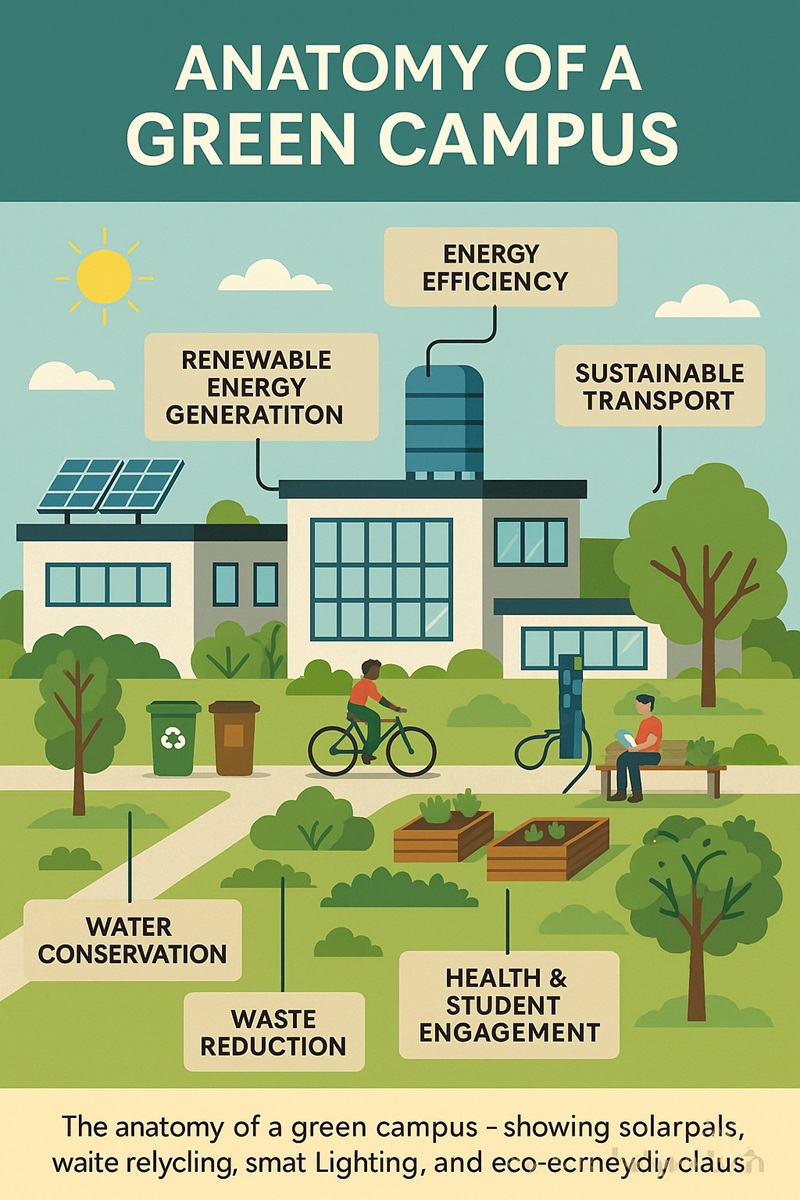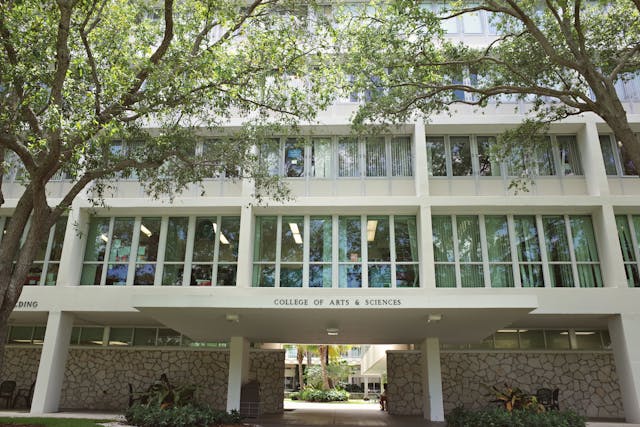What Is a Green Campus?
A green campus is a school designed to help the planet and support student health. It uses clean energy, saves water, and builds with eco-friendly materials. Smart systems track energy and reduce waste. These steps make the campus safe, bright, and good for learning.
Learning in a Greener Way
Schools today are changing fast. They use new lessons, new tools, and now, new kinds of buildings. Around the world, schools are trying to make learning spaces that are healthy for people and kind to the planet. These changes support global climate goals and teach students how to care for the Earth.

What Makes a Green Campus
A green school does more than switch to LED lights or put out recycling bins. It plans every part of the campus to use less energy and less waste. Buildings, parks, and classrooms work together like one big ecosystem. Smart designs, clean energy, and good air make schools better for both students and teachers.
Some schools are already showing how green design can change education for the better. Here are two great examples:
University of California, Davis (USA)
UC Davis is one of the world’s greenest campuses. It runs a large 62-acre solar farm that powers much of the university. The school also reuses water for gardens and lawns. Students mostly ride bikes, making it one of the most bike-friendly places in North America. UC Davis keeps more than 70% of its waste out of landfills, proving that a clean, smart campus can still be full of life and learning.
Nanyang Technological University (Singapore)
NTU’s EcoCampus is a top example of tropical green design. The buildings use natural air flow and green roofs to stay cool, which cuts energy use by about 35%. Solar panels and smart energy tracking help the school save power every day. NTU shows how smart design and clean energy can build a bright, eco-friendly future for students.
Teamwork for Better Schools
Making a green campus takes teamwork. Leaders, teachers, and maintenance staff all share ideas and jobs. In many institutions, school facility management plays a pivotal role in ensuring these changes are aligned with sustainability goals while meeting daily operational needs. New technology helps them see how much power or water the school uses. With this data, they can fix waste, save money, and protect the planet every day.
Saving Energy with Smart Systems
Heating, cooling, and lighting use a lot of power in schools. Smart systems now help control these costs.
- Smart sensors turn off lights when rooms are empty.
- Automatic temperature control keeps classrooms comfortable without wasting energy.
- Air monitors check that air stays clean and fresh.
These tools make buildings work better and help students focus in a healthy space.
Using Water Wisely
Water is precious, and many areas are running short. Schools can help by:
- Installing low-flow taps and toilets that use less water.
- Using rainwater tanks to collect and reuse water.
- Planting native trees and grasses that need less watering.
- Adding drainage systems that stop dirty water from polluting rivers.
These choices save water and show students how small actions protect nature.
Why It Matters
Greener schools teach more than lessons in class. They show how people and places can live in balance. Every smart light, clean drop of water, and shaded garden helps build a safer, kinder future for our planet.
Waste Reduction and Circular Resource Use
Using Less and Reusing More
Cutting down waste starts with small, smart choices. Schools can make a big difference by recycling and composting. From classrooms to cafeterias, these habits help send less trash to landfills. Many schools now replace single-use items with things that can be washed and used again.
Digital tools also help reduce paper waste. Online forms and reports make work faster, easier, and better for the planet.
Some campuses now plan for reuse from the start. Old building parts are saved during repairs, and extra furniture is given away instead of thrown out. This “reuse and repurpose” mindset saves money and protects nature.
Technology as a Sustainability Booster
Technology is helping schools go green in smarter ways. Modern maintenance systems track energy, check building health, and predict problems before they grow. This stops sudden breakdowns and saves both time and money.
By looking at how buildings use power or water, schools can find better ways to save. For example, fixing only the machines that really need work cuts waste and lowers costs.
Smart systems also show how well each campus is meeting its green goals. Everyone—from staff to students—can see progress and take pride in results.
Everything connects: better lighting helps cooling systems work less, and cleaner waste systems prevent bad smells and pests. When schools run smoothly, they save energy, reduce waste, and help the planet at the same time.
Healthier Spaces for Better Learning
Green schools don’t just help nature—they help people too. Clean air, safe materials, and natural light make classrooms healthy and happy. Using gentle cleaning supplies and keeping air fresh helps students think and feel better.
Outdoor learning areas are also important. Gardens, shady spots, and play areas help kids relax and stay active. These places spark curiosity and creativity, building a stronger bond between students and the world around them.
Empowering Communities Through Sustainable Practices
Schools That Inspire Change
Schools do more than teach—they bring people together. Families, neighbors, and local groups often meet on campus. When schools use green practices, they set a strong example for the whole community.
Students learn the most from these changes. Seeing solar panels, recycling bins, and eco-friendly buildings helps them understand how to care for the planet. Many schools also teach sustainability in class, turning their buildings into real-life lessons in action.
Aligning Operations With Green Goals
To make real progress, schools need clear goals and solid plans. Leaders should look at both short-term costs and long-term environmental effects. This helps them make smart choices that save time, money, and energy.
Maintenance and facility teams play a big part in this effort. With the right tools, they can spot problems early and make quick improvements. Strong teamwork between leaders and staff keeps the whole system running smoothly—and keeps the school green.
A Future Built on Innovation and Care
The way schools are built will keep changing as the planet changes. Choosing green systems now protects both people and the Earth. A school can be more than a place to study—it can be a symbol of community care and climate responsibility.
As awareness grows, schools can lead the way. Green campuses save money, improve health, and teach students how to protect the planet. With good planning and shared values, schools can grow into bright, sustainable spaces that inspire future generations.



